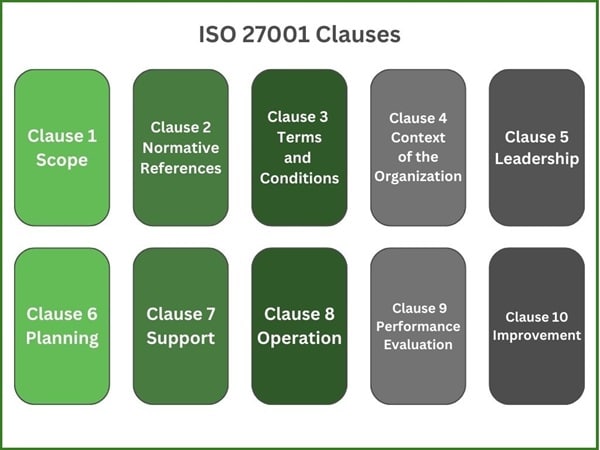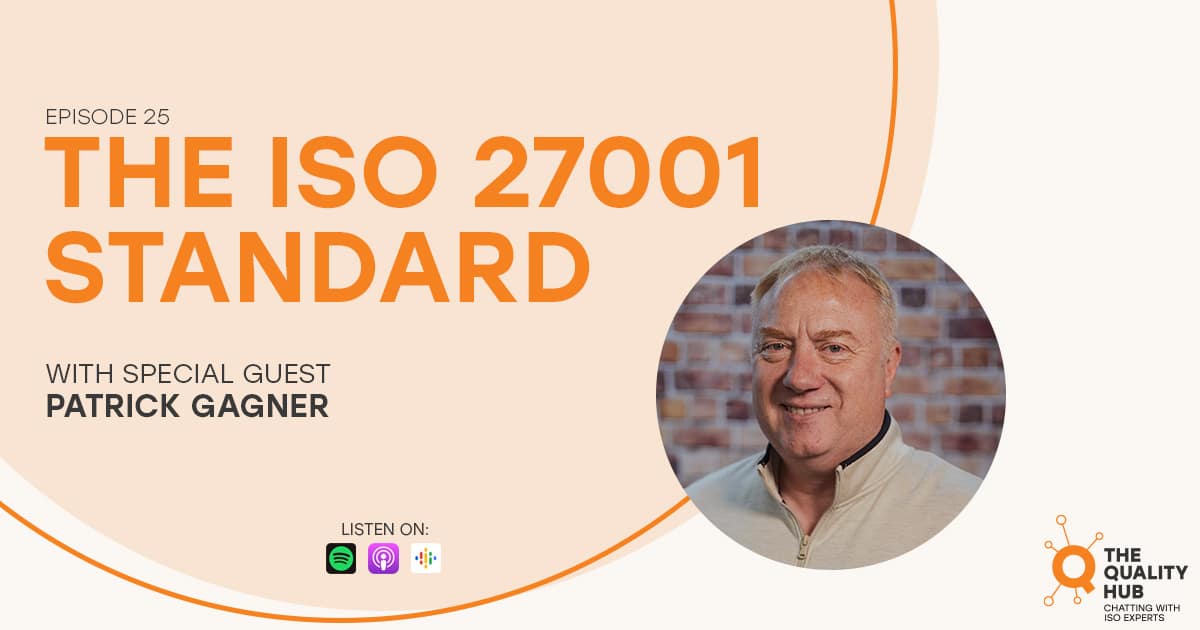ISO 27001 Clause 10 Explained
What is ISO 27001 Certification?
ISO 27001 is an international standard for managing information security. It provides a systematic approach to securing sensitive information, ensuring its confidentiality, integrity, and availability. The standard outlines a framework for establishing, implementing, maintaining, and continually improving an Information Security Management System (ISMS). The goal is to help organizations of any size or industry protect their data from security threats such as cyberattacks, data breaches, and unauthorized access.
The certification process involves assessing an organization’s current security practices, identifying potential risks, and putting in place effective controls to mitigate those risks. ISO 27001 requires organizations to perform risk assessments regularly and to continuously monitor and improve their security measures. The standard emphasizes the importance of leadership commitment, employee awareness, and ongoing evaluation of information security practices to adapt to evolving threats.
Get a Free Quote
Unique Aspects of ISO 27001
One of the unique aspects of ISO 27001 is its comprehensive approach to covering not just technology but also processes and people. It goes beyond simply installing security software; it ensures that there are policies and procedures in place to govern how information is handled across the organization. This includes everything from physical security controls, such as securing data centers, to procedural controls, such as how employees access and manage sensitive data.
Achieving ISO 27001 certification demonstrates that an organization is committed to maintaining a high level of information security. It is often sought by businesses looking to build trust with clients and partners, especially in industries that handle large volumes of sensitive data like finance, healthcare, and technology. By being ISO 27001 certified, organizations can assure stakeholders that they are adhering to internationally recognized best practices in information security management.
What is the ISO 27001 Clause 10 About?
ISO 27001 Clause 10 focuses on the continuous improvement of the Information Security Management System (ISMS). Specifically, it outlines the need for organizations to take corrective actions to address non-conformities and improve the effectiveness of their ISMS. This clause ensures that the ISMS is not a static system but one that evolves in response to internal and external factors, security incidents, and audit findings.

Clause 10 requires organizations to identify and handle any non-conformities in their ISMS processes or controls. When a non-conformity is detected, the organization must evaluate the root cause and determine what corrective actions are necessary to prevent it from recurring. This step is critical to ensure that vulnerabilities are addressed in a structured and systematic way, strengthening the overall security posture.
In addition to addressing non-conformities, Clause 10 also emphasizes the importance of continual improvement. Organizations are encouraged to regularly review their ISMS, assess opportunities for improvement, and make enhancements to their security policies, processes, and controls. This proactive approach helps organizations stay ahead of emerging threats and ensures that their ISMS remains effective over time.
Ultimately, Clause 10 ensures that an organization’s ISMS is adaptable, resilient, and focused on long-term effectiveness. By fostering a culture of continuous improvement, organizations can better manage their information security risks and maintain compliance with ISO 27001 standards, ensuring ongoing protection of their sensitive information.
How Does a Company Comply with ISO 27001 Clause 10?
Complying with ISO 27001 Clause 10 requires a company to establish a structured process for identifying, addressing, and preventing non-conformities in its Information Security Management System (ISMS), while also fostering a culture of continual improvement. Here’s a breakdown of the steps an organization should follow to ensure compliance:
1. Identify Non-Conformities:
The first step is to actively identify any non-conformities in the ISMS. Non-conformities can arise from internal audits, security incidents, or routine monitoring activities. A non-conformity occurs when a specific security control, process, or procedure does not meet the requirements set by the ISO 27001 standard or the organization’s internal policies. Identifying these discrepancies is crucial for taking corrective actions.
2. Corrective Action Plan:
Once a non-conformity is identified, the organization must analyze its root cause and implement corrective actions to address the issue. This involves determining what changes are needed in the system or processes to prevent recurrence. The corrective action plan should include clear steps, deadlines, and assigned responsibilities to ensure that the issue is resolved efficiently. The corrective actions should not only fix the immediate problem but also aim to prevent similar issues from happening in the future.
3. Continual Improvement:
Clause 10 emphasizes that continual improvement is essential for maintaining an effective ISMS. Organizations must review their ISMS regularly and seek out areas for enhancement. This could include updating policies, refining security controls, or adopting new technologies to better manage information security risks. Conducting periodic risk assessments and engaging in management reviews are effective ways to identify areas for improvement and make informed decisions about changes.
4. Documentation and Record-Keeping:
To comply with Clause 10, companies must document all non-conformities, corrective actions, and improvement initiatives. This documentation serves as evidence that the organization is following a structured process for addressing issues and continuously improving its ISMS. Proper record-keeping is critical for internal audits, external certifications, and demonstrating compliance with ISO 27001 requirements.
By actively managing non-conformities and fostering a culture of ongoing improvement, companies can ensure their ISMS remains robust, adaptable, and aligned with evolving security threats. This proactive approach not only helps meet the requirements of ISO 27001 Clause 10 but also strengthens the organization’s overall security posture.

How Much Time Does it take to get ISO 27001 Certification?
ISO 27001 certification takes 4 to 6 months to complete. If you are implementing multiple standards at the same time, it could take longer.
How Much Does it Cost to get ISO 27001 Certification?
Depending on the size and complexity of your company, it can cost between $18,000 and $23,000 to prepare for ISO 27001 certification.
Helpful Resources: The ISO 27001 Standard Podcast
In this episode of “The Quality Hub” podcast, host Xavier Francis interviews Patrick Gagner, a Cyber Consultant at Core Business Solutions, about the ISO 27001 and Information Security Management System. Pat explains ISO 27001 as an Information Security Management System (ISMS), emphasizing its risk-based approach to safeguarding information confidentiality, integrity, and availability. Listen Now
What is Annex A?
With ISO 27001 certification, Annex A plays a critical role as it provides a comprehensive list of information security controls that organizations can use to mitigate risks identified in their Information Security Management System (ISMS).

These controls are categorized into 14 domains, covering various aspects of information security such as access control, encryption, physical security, and incident management. Annex A helps organizations identify the specific controls they need to implement based on their unique risks and business environment, ensuring that the ISMS is tailored to address relevant security challenges.
It’s important to note that Annex A is not a checklist of mandatory requirements but rather a catalog of controls that organizations can choose from as appropriate to their specific needs. During the risk assessment process, an organization identifies its security risks and then selects controls from Annex A (or alternative controls) to mitigate those risks.
Annex A essentially serves as a reference to ensure that the organization has considered a wide range of security areas, providing a structured way to safeguard the confidentiality, integrity, and availability of information.
The use of Annex A demonstrates a proactive and structured approach to information security within the organization’s ISO 27001 framework.
Customer Reviews


